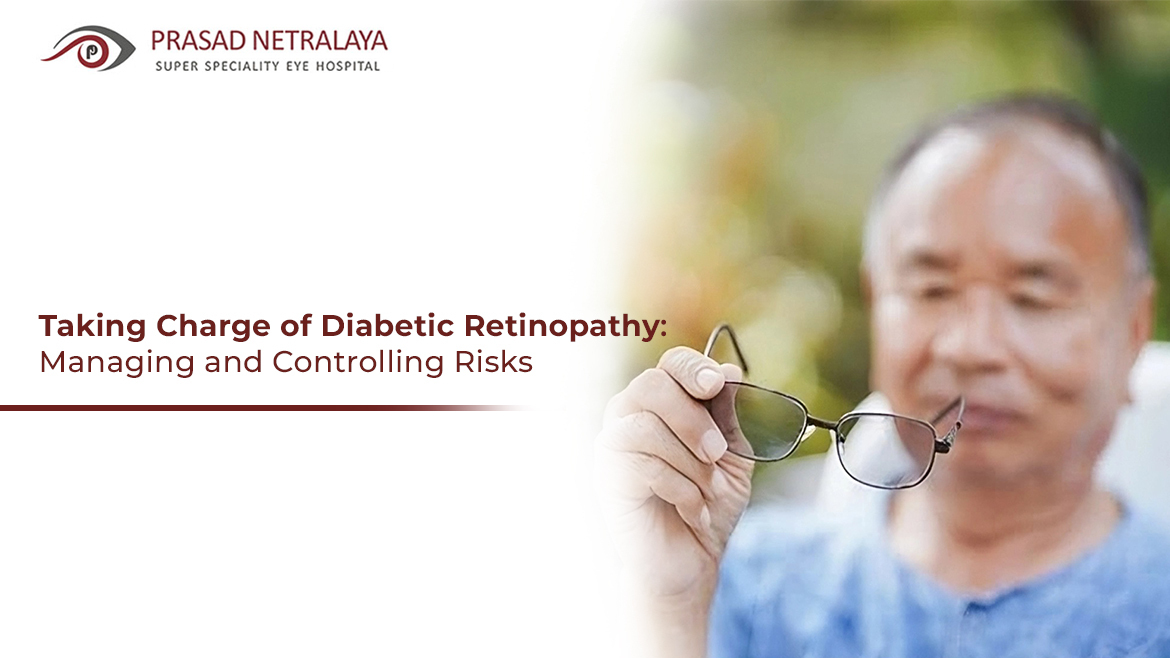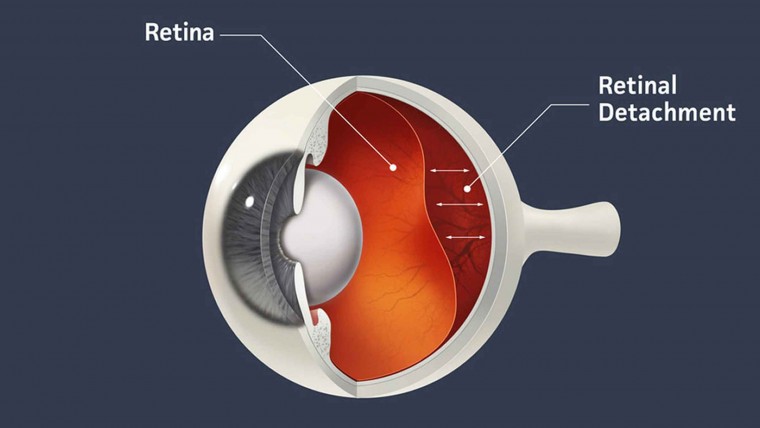Diabetic retinopathy is a debilitating eye disease caused by uncontrolled blood sugar levels in an individual. If this condition is left unchecked, it can lead to vision loss and blindness.
It affects patients suffering from Type I and Type II diabetes. According to the National Library of Medicine, there were approximately 103 million cases of DR worldwide in 2020.
In this article, we’ll explore the symptoms of diabetic retinopathy, how to treat it, and some preventative measures you can take to manage the risks.
Table of Contents
What Is Diabetic Retinopathy and Its Symptoms?
Diabetic Retinopathy is a result of complications with diabetes.
High blood sugar in an individual can damage the blood vessels in their retina, causing diabetic retinopathy. The retina is the light-sensitive layer at the back of our eyes.
The initial stages of DR do not showcase any symptoms. However, as the disease progresses, the patient might develop:
- Floaters in front of their vision
- Dark spots and empty areas in a patient’s field of view
- Fluctuating vision
- Eye strain while reading
- Vision loss or blindness
How To Manage the Risks of Diabetic Retinopathy?
Some ways of controlling and managing the risks associated with diabetic retinopathy are listed below.
1. Control of Blood Sugar
The most pivotal step in mitigating the ill effects of DR is controlling one’s blood sugar levels. Patients can do this by maintaining a healthy diet, participating in frequent exercise, and taking their prescribed medication.
Managing your blood sugar within a specific range will significantly reduce the risk of contracting this disease and save you from vision loss.
2. Stay on Top of Your Eye Health
Diabetic patients should make it a point to stay on top of their eye health through regular check-ups and eye exams. It is highly recommended that patients visit an ophthalmologist at least once a year.
Eye exams can identify any changes in a person’s retina, allowing for timely intervention. Detecting DR in its early stages is crucial in preventing the disease from progressing.
3. Controlling Blood Pressure
Chronic high blood pressure is responsible for damaging the retina and gradually causing vision loss. The increased blood pressure harms the blood vessels in the eye and can lead to ruptures and leaks. Blood pressure can be controlled through improvements in lifestyle, medication, and regular check-ups.
4. Medication
Diabetic retinopathy is comorbid with diabetes, and hence, managing the symptoms of diabetes will also help alleviate the risks associated with DR. Insulin and other prescribed medications help lower blood pressure and sugar levels, reducing the chances of vision loss.
A doctor may also need you to undertake a special lab test, known as A1C, to ensure that the diabetic treatment is working. This test details an individual’s average blood sugar levels over three months. Patients can then set personal goals for their sugar levels and prevent DR from advancing.
In some advanced cases, an ophthalmologist could recommend eye injections to reduce the swelling in the retinal blood vessels.
What Are The Possible Treatment Options for DR?
The best treatment for controlling and managing diabetic retinopathy is managing diabetes. However, if the disease has reached a more advanced stage, the patient might have to undergo laser treatment, intravitreal injections or eye surgery.
During laser treatments, the doctor will direct lasers at the retinal blood vessels to shrink them and prevent bleeding. In severe cases, a patient might need eye surgery, where the doctor will perform a procedure called vitrectomy.
Intravitreal injections are given to the eye to decrease the new blood vessels and swelling in the retina . They may be in form on AntiVegf or steroids.
Vitrectomy involves making minute incisions in the eye to remove the vitreous gel and blood. This cloudy gel fills the space between the lens and the retina. Followed by removing fibrosed blood vessels and attaching retina into its position.
Also Read : Diabetic Retinopathy: Causes and Symptoms to Keep an Eye Out For
Looking To Treat Diabetic Retinopathy? Head Over to Prasad Netralaya Hospital
Diabetic retinopathy is a serious eye condition that gets progressively worse, culminating in vision loss and blindness. Timely intervention plays a key role in managing and controlling the risks associated with DR.
Leading a healthy lifestyle, managing stress, and maintaining low blood sugar levels are key components that help mitigate the risks. However, each individual case is unique, and regular eye exams are highly recommended.
Visit Prasad Netralaya Eye Hospital today and set up your eye health check-up with leading ophthalmologists in the field. Remember, prevention is always better than cure.
Dr. Vikram Jain, M.S. had his medical training (MBBS) from Kasturba Medical College, Mangalore, India. He did his master’s in Ophthalmic surgery from Kasturba Medical College, Manipal. He currently manages the Glaucoma department of Prasad Netralaya hospital.



